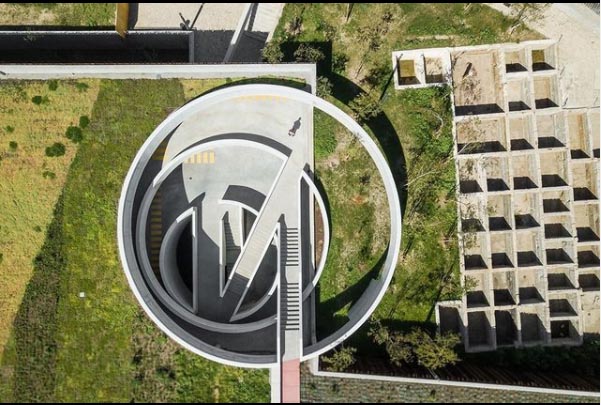May 2 2021
7 ways to make your project Location and Transportation more sustainable:
Steps in your green building process
BY JOSEPH AZAR
By now, we all know that sustainability should be integrated into our design practice and the way we approach all our architectural projects. It is our responsibility to take action together as entrepreneurs, owners, clients, architects, engineers, manufacturers, etc., because of the obvious and significant impact buildings can have.
IMPACT OF BUILDINGS ON ENERGY CONSUMPTION!
From an architectural lens, buildings are the largest users of energy in our society. This also means they present our greatest opportunity for energy conservation and environmental protection.
The rapidly growing global energy use has raised concerns over the continued depletion of energy resources and their negative environmental impacts. Current predictions show that this growing trend will continue.
I will be starting a series of articles considering different aspects of green building design and technical information. This first article focuses on location and transportation. My approach will be based on LEED (Leadership in Energy and Environmental Design), the most widely used green building rating system in the world. Available for virtually all building types, LEED provides a framework for healthy, highly efficient, and cost-saving green buildings. LEED certification is a globally recognized symbol of sustainability achievement and leadership. It applies to all building types and phases, including new construction, interior fit-outs, operations and maintenance, and core and shell.
If you want to know more about LEED, please check this link: https://www.usgbc.org/help/what-leed.
HOW CAN LOCATION AND TRANSPORTATION CHOICES AFFECT THE SUSTAINABILITY OF OUR PROJECT, AND WHAT ARE THE MAIN THINGS TO CONSIDER?
- Sensitive Land Protection:
Always try to choose the location of your building on a previously developed area. This choice should be made early to avoid disturbing sensitive areas:
- Never develop on prime farmlands, flood plains, or lands that are habitats for endangered species.
- Never develop near water bodies or be at least 100 feet (30 meters) away. For wetlands, maintain a minimum distance of 50 feet (15 meters).

- High Priority Site:
Always consider conserving sites classified as historic districts. It is essential to know how a site is designated as historic—a 100-year-old neighborhood does not automatically qualify as a historic district.
Whenever possible, choose a previously developed land area—defined as having 75% or more infill within a 1.5-mile (800-meter) radius.
Another important consideration is whether the site holds a priority designation, such as those listed under the EPA National Priority List, Federal Empowerment Zone, or Federal Enterprise Community. This designation promotes growth in certain areas. Check if such designations exist in your country or project location.
Even if only a portion of the site falls within a priority designation, it still counts toward LEED credit points.
- Brownfield Remediation:
If a site is polluted, consider remediating it or selecting a remediated site to contribute to environmental recovery. This process involves cleaning the site using chemical, physical, or biological means—for example, addressing soil contamination.
A site assessment (Phase 1 and Phase 2) can determine contamination levels through soil and water testing.
- Surrounding Density and Diverse Uses:
A smart choice is to locate your project in a developed area where infrastructure and diverse uses already exist. This reduces the environmental impact of new construction.
“Diverse uses” refers to the walking distance between your project and essential services. These include food retail, community-serving retail, services, civic and community facilities, and community anchor uses. Regardless of how sustainable the construction is, if the project is not near diverse uses, energy consumption from transportation will be significant, reducing overall efficiency.
- Access to Quality Transit:
Proximity to public transportation can save significant energy. Consider locating your project near bus stations, rapid transit lines, ferry terminals, or areas with ride-sharing services. This reduces individual car use, minimizing traffic pollution and energy consumption.
For LEED compliance, specific minimums for daily and weekly transit trips must be met.
- Locations Providing a Bicycle Network:
Prioritize sites with access to a bicycle network within a specified distance. Additionally, provide your project with appropriate short-term and long-term bicycle storage. The storage requirements vary based on whether the project is residential or commercial.
- Reduce the Parking Footprint:
Minimize the parking footprint by encouraging underground or covered parking. Offer incentives to promote the use of green vehicles and provide electric vehicle charging stations and related facilities.

THE CONCLUSION:
In conclusion, anyone planning a new project should carefully consider location choices. Architects, when involved early, should provide informed advice on the pros and cons of potential sites.
The most important question to ask at the outset is: Where should we locate our project based on its specific function? This decision, guided by the key parameters outlined here, is crucial for ensuring long-term sustainability and environmental responsibility.
By Joseph H. Azar
Artist/Architect/LEED AP (BD+C)/Computational/ Environemtal design
Date: May 2, 2021

Artist/Architect/ LEED AP (BD+C)
Computational/ Environmental design
Enjoyed this article? Discover more in the Blog section
